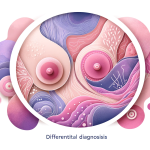Cancer is a disease that can affect anyone, but it is important for women to be aware of the common types of cancer that they may be at risk for. Explore the signs and symptoms of cancer in women, including the top 10 warning signs to look out for. Early detection and prevention are key in the fight against cancer, so discuss the importance of regular screenings and self-examinations. Deep dive into the various treatment options available for women diagnosed with cancer, including the types of treatment and their potential side effects. Stay informed and empowered in your health journey by reading on.
Key Takeaways:
- Women should be aware of the top 10 signs and symptoms of cancer including unusual abnormal bleeding, persistent stomach pain, and sudden weight loss.
- Early detection through regular screenings and self-examinations is crucial in early detection and for successfully managing cancer in women.
Understanding Cancer and its Prevalence in Women
Cancer represents a significant health concern impacting women on a global scale, underscoring the importance of comprehending its prevalence, symptoms, and early detection techniques for the purpose of efficient disease management and treatment.
Common Types of Cancer in Women
Common types of cancer affecting women include breast cancer, ovarian cancer, gynecologic cancers, colorectal cancer, and skin cancer. Breast cancer ranks among the most prevalent cancers in women globally, commonly characterized by symptoms such as a breast lump, changes in breast size or shape, and nipple discharge.
Ovarian cancer poses challenges in early detection due to subtle symptoms like abdominal bloating, pelvic pain, and frequent urination. Gynecologic cancers encompass cancers affecting the uterus, cervix, and ovaries, with risk factors including HPV infection and family history.
Colorectal cancer may present with symptoms like blood in stool, changes in bowel habits, and abdominal discomfort. Skin cancer, frequently associated with sun exposure, underscores the importance of regular skin screenings and timely detection for effective treatment.
Signs and Symptoms of Cancer in Women
It is imperative for women to be vigilant regarding any aberrations in their bodies as early detection and effective treatment of cancer hinges on recognizing the signs and symptoms.
Top 10 Warning Signs to Look Out For
The identification of the top 10 warning signs of cancer in women comprises:
- Unexplained weight loss
- Persistent pelvic pain
- Changes in breast tissue including the presence of lumps or abnormal discharge
- Abnormal vaginal bleeding
- Bloating
- Fatigue
- Alterations in appetite
- Changes in the skin
- Back pain
- Detection of lumps in various areas
Unexplained weight loss, for example, can be indicative of several types of cancer, such as pancreatic, stomach, esophageal, or lung cancer. Persistent pelvic pain may serve as a potential indication of ovarian, cervical, or uterine cancer. Alterations in the breast, such as the presence of lumps or discharge, could be early indicators of breast cancer. Abnormal vaginal bleeding has been associated with cervical or endometrial cancer. Bloating, especially when coupled with other symptoms, may be linked to ovarian cancer. Fatigue and changes in appetite could signify various cancers that affect energy levels and metabolism. Changes in the skin might be indicative of skin cancer, while unexplained back pain could occasionally be a symptom of bone, ovarian, or pancreatic cancer. The presence of lumps in regions such as the breast or lymph nodes warrants thorough examination by a qualified medical professional.
Early Detection and Prevention of Cancer in Women
Early detection and prevention of cancer in women play a crucial role in enhancing the likelihood of successful treatment. This objective can be realized by adhering to a schedule of regular screenings and conducting self-examinations.
Importance of Regular Screenings and Self-Examinations
Regular screenings and self-examinations constitute essential elements of early detection, facilitating the identification of cancer at a stage that offers enhanced treatment opportunities.
Mammograms, specialized X-ray screenings designed for breast cancer, serve a crucial function in detecting anomalies in breast tissue that could suggest the presence of cancer. These screenings are recommended for women above a specific age or those with particular risk factors.
Additionally, through the consistent practice of self-examinations, individuals can develop a greater familiarity with the typical appearance and texture of their bodies, thereby enabling the prompt recognition of any alterations or irregularities. The early detection of symptoms through these methodologies can lead to timely medical intervention and significantly improve the likelihood of successful treatment outcomes.
Treatment Options for Cancer in Women
The treatment options for cancer in women are contingent upon the specific type and stage of the cancer. These options encompass surgical interventions, radiation therapy, chemotherapy, and targeted treatment modalities.
Types of Treatment and Their Side Effects
The primary methods of cancer treatment for women encompass surgery, chemotherapy, and radiation therapy, each of which is accompanied by its own distinct set of side effects.
Surgery stands as a frequently employed treatment modality wherein the physician excises the tumor and adjacent tissue. The primary objective of this approach is to eradicate as much of the cancerous cells as feasible. Common side effects associated with surgery may comprise pain, infection, and scarring.
Chemotherapy entails the utilization of pharmacological agents to eliminate cancer cells or impede their proliferation. Typical side effects experienced during chemotherapy may encompass nausea, hair loss, and fatigue.
Conversely, radiation therapy employs high-energy rays to obliterate cancer cells. Side effects of radiation therapy may include alterations in skin texture, fatigue, and the potential for damage to neighboring organs.
It is imperative to engage in a discourse with your healthcare team regarding these side effects to formulate effective strategies for their management.
Frequently Asked Questions
What are the top ten signs and symptoms of cancer that women must be aware of?
The top ten signs and symptoms of cancer that women must be aware of are:
1. Unexplained weight loss
2. Changes in bowel or bladder habits
3. Unusual bleeding or discharge
4. Persistent cough or hoarseness
5. Difficulty swallowing
6. Skin changes or new moles
7. Fatigue or weakness
8. Persistent pain
9. Lumps or thickening in the breast or other body parts
10. Indigestion or difficulty eating
When should women seek medical attention for these symptoms?
Women should seek medical attention if they experience any of these symptoms for a prolonged period of time (more than 2-3 weeks), or if the symptoms worsen or become more frequent. It is important to address any concerns with a healthcare professional to determine the cause and appropriate treatment.
Are these symptoms exclusive to cancer or can they be caused by other conditions?
While these symptoms can be indicative of cancer, they can also be caused by other conditions. It is important to consult a doctor for proper diagnosis and treatment.
Are there any lifestyle factors that can increase a woman’s risk of developing cancer?
Yes, certain lifestyle factors such as smoking, excessive alcohol consumption, poor diet, and lack of physical activity can increase a woman’s risk of developing cancer. It is important to maintain a healthy lifestyle to reduce the risk of cancer and other health conditions.
How often should women get screened for cancer?
The frequency of cancer screenings varies depending on age, family history, and other risk factors. It is recommended to discuss with a doctor to determine the appropriate screening schedule for each individual.
What steps can women take to reduce their risk of developing cancer?
Women can reduce their risk of developing cancer by maintaining a healthy weight, avoiding tobacco and excessive alcohol consumption, eating a balanced diet, staying physically active, and getting regular medical check-ups and screenings.






